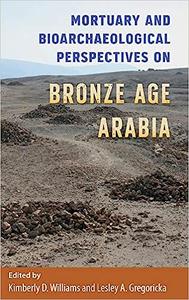
Free Download Kimberly D. Williams, "Mortuary and Bioarchaeological Perspectives on Bronze Age Arabia "
English | ISBN: 1683400798 | 2019 | 270 pages | PDF | 16 MB
This volume brings together expert s in archaeology and bioarchaeology to examine continuity and change in ancient Arabian mortuary practices. While most previous investigations have been limited geographically to Egypt and the Levant, this volume focuses on the lesser-studied southeastern Arabian Peninsula, showing what death and burial can reveal about the lifestyles of the region's prehistoric communities. In case studies from Oman, the United Arab Emirates, Qatar, and Bahrain, contributors explore the transition from the earliest to the most complex mortuary monuments in the Bronze Age and beyond. They consider sociopolitical and environmental factors that may have influenced mortuary practices and what skeletal biogeochemistry can reveal about changing mobility and access to food resources. They also discuss sites that illustrate more nuanced shifts in burial traditions that took place during the evolution of the Hafit to the Umm an-Nar cultures, a period of transformation often neglected because the semi-nomadic lifestyle of this intermediary culture left behind a limited archaeological record. Burial patterns reveal a shift from cairns to communal tombs that offers new insight into the relationship between the mortuary landscape and the living, while the presence of animal bones interred with human remains embodies the significance of herd management as symbols of both territoriality and reproduction. By using skeletal remains as a rich source of scientific data that complements studies of burial context, this volume represents an important turning point for mortuary research in the region. Its novel interdisciplinary and international perspective provides a synthesis of new ideas and interpretations that will guide future archaeological research in Arabia and beyond. A volume in the series Bioarchaeological Interpretations of the Human Past: Local, Regional, and Global Perspectives, edited by Clark Spencer Larsen
Read more
